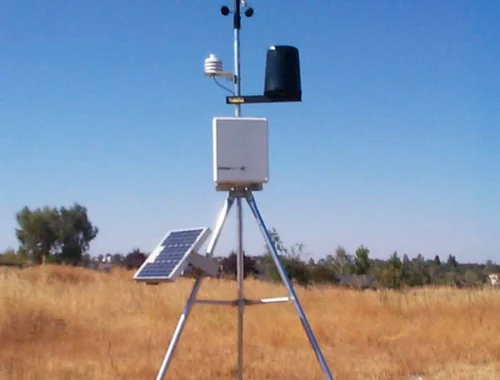Did a Gene Mutation Help Humans Become Super Runners?
>
When Eliud Kipchoge broke the tape at the Berlin Marathon last month—setting a new world record by 78 seconds—he and his fellow marathoners may have had evolution to thank. Or, more specifically, the CMAH gene.
In 1998, Ajit Varki, a biologist at the University of California San Diego (UCSD), helped identify a small variation in humans’ CMAH genecompared to that of chimpanzees. The landmark study was the first to find a genetic difference between usand our closest relatives. While CMAH is present in every member of both species, it remains intact in primates (among many other animals), whereas humans are thought to have lost part of the gene between 2 million and 3 million years ago, rendering it effectively inactive.
Varki and other scientists spent the next two decades studying that ancienttweak to CMAH, linking it to an increased risk of ailments such as muscular dystrophy and heart disease. Now, new research published last month in the journal Proceedings of the Royal Society B added another surprising effect to that list: The gene may have also made humansbetter long-distance runners. “Ironically,” Varki explained, “the same mutation that increases the risk of these diseases gives us the ability to run.”
It’s a connection that Varki says he’s been thinking about for years. “It was really a hunch based on many clues,” Varki says. These hints included CMAH’s impact on muscle mass and the fact that the gene mutation seems to have happened around the same time that we evolved big feet and a network of sweat glands—features that helped humans become some of the best distance runners in the world.
Varki’s lab has long compared normal mice, in which CMAH is naturally active, to others that are specially bred with the inactive gene. But when it came to testing the animals’ running ability, Varki had trouble convincing anyone in his lab to organize what he called “a long-shot experiment.” That is, until he met graduate student Jonathan Okerblom in 2012.
“I was really excited about this running hypothesis,” says Okerblom, who was on a research rotation in Varki’s lab at the time. Okerblom had been formulating a hunch about CMAH and running separately from Varki; he remembers first talking about the possibility over a beer with fellow graduate students. “For me, it was like an epiphany moment.”
After the two met and discussed their theories, Varki suggested that Okerblom work on the hypothesis with Varki’s mice. So, amid other projects, Okerblom set out to design an experiment that measured the running capabilities in both CMAH and inactive-CMAH mice. The problem, Okerblom says, was that they needed a treadmill.
At first, the team built running wheels directly into the mice’s cages and used a bicycle speedometer attached to the side as a measurement tool. “The wheel has its drawbacks,” Okerblom says. “It likely does not emulate the [mouse hunting persistently] as accurately, since it’s likely not running until exhaustion.”
Eventually, the team was able to borrow a mouse treadmill. It had six lanes and a mild shocker (set to low) on the bottom that would encourage the mouse to keep running. The study measured how long a mouse could run before it rested on the shocker for four seconds, indicating exhaustion.
Running both sets of mice on the treadmills for 15 days, Okerblom saw notably increased running performance in theinactive-CMAH group using both the wheel and the treadmill. UCSD physiologist Ellen Breen, who analyzed the mice’s muscle responses, also found a greater resistance to fatigue, better respiration, and more capillaries—all traits associated with great marathoners.
“When [the study] landed on my desk, I was obviously pretty delighted,” says Daniel Lieberman, a professor of human evolutionary biology at Harvard University and the co-author of a widely circulated 2004 paper about how humans evolved to be such well-adapted runners. He says that he too surmised a genetic connection but that this is the first study showing a direct link.
Still, Lieberman says there are many unanswered questions. “We don’t even know that this gene evolved for this function,” he says. Similarly, he adds that because every human has an inactive CMAH gene, the implications for individual athletesare fairly limited. “The key evolutionary story is that all humans have capabilities for remarkable endurance, and this gene plays a role in that.”
Another major uncertainty is how transferable this research on mice is to humans. A comprehensive 2014 study comparing the two genomes found that although mice and humans have similar systems that control gene activity, many DNA variations and gene-expression patterns are not shared between the species. Okerblom and Varki have both addressed the study’s limitations, which other scientists have also pointed out. “It’s interesting in terms of the effects on exercise behavior and performance. I don’t think it necessarily tells us about human evolution,” said Theodore Garland Jr., an evolutionary physiologist at the University of California Riverside who is also skeptical that a single gene could have so much of an impact on human ability. “Typically in evolution, there are many, many different ways things could occur…It’s highly unlikely that a single gene is going to be crucial and necessary to evolution.”
While Varki is bullish on CMAH’s importance, he is the first to acknowledge that there’s room for more research concerning the gene. “[This] could be relevant to human muscle biology, physiology,” he says. For now, though, there’s at least one thing Varki is sure of: “The mice really like to run.”
You May Also Like

HOW TO IMPROVE PRODUCTION EFFICIENCY OF A LASER PLATE CUTTING MACHINE
November 22, 2024
Automatic Weather Station Price Analysis and Market Trends
March 16, 2025